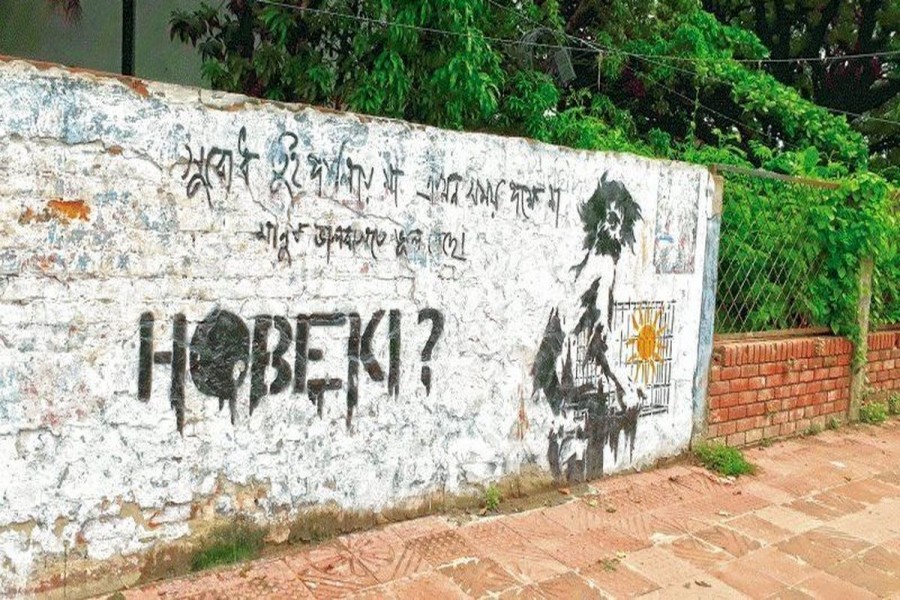All nations around the world have their unique traditions of graffiti. As has been seen since the early times, a graffito stands for the spontaneous expression of public feelings. They touch upon varied areas of thought, ranging from anger and dissent to weird desires. Exhortations and philosophising have also a role in graffiti.
Bangladesh has a long and rich tradition of graffiti culture. It appeared in its full-blown character in the tumultuous days of political movements in the 1960s in the then East Pakistan. With the popular demand for self-rule intensifying over time, the expressions in these graffiti turned more impatient and scathing by the year. Inspired by the demand for implementation of the six-point demand, the tone of the graffiti kept gaining force; and finally became the demand for full independence in the concluding months of 1970. In the first three months of 1971, the land's graffiti were dominated by the one and only demand: Fight for free Bangladesh. However, these graffiti had begun appearing, sporadically, in the late sixties. People in Dhaka and other cities were urged to take up arms against the dictatorial Pakistani rulers. Those were later accompanied by protests against economic and other disparities with Pakistan's western wing, and the demand for the release of all political prisoners from jail. The tradition of political graffiti in East Pakistan is traced back to the days of the Language Movement in 1952. A common demand in the graffiti in those days was declaration of Bangla as one of the state languages of Pakistan.
Due to unremitting political turbulence and movements, the graffiti during the Pakistan period mainly voiced political aspirations of the people. Social issues could not manage much space there. This fact applies to many other countries as well, especially those ruled by autocracies. A split, thus, separates the graffiti of the countries ruled by authoritarian rulers from those in the 'democratic and free' societies. The latter, however, are found wildly extravagant in the application of their freedom. The no-holds-barred expressions in these graffiti reflect the angst and rebelliousness of the socially marginalised. The city walls of the countries - from today's Europe to North America - are virtually a common platform that portrays the contradictions present in society. There is a distressing aspect, too. These dissenting graffiti often carry elements of instigations for social unrest. But then, a chief purpose of indulging in social graffiti is attracting public attention. They definitely enjoy a wide clientele of admirers, despite their being anonymous.
The tradition of modern graffiti is steeped in a strange mélange of feelings and messages. Once upon a time, they featured demands for the downfall of the colonial rulers. Those were later replaced by appeals for fight to oust the home-grown oppressors. Today's developed nations have long been free of political graffiti. The walls in many of these countries remain scribbled with outbursts triggered by social discrepancies. Semblances of democracy are in place in most of the developing countries. The nature and content of their graffiti also wear a new look these days, with domestic politicking holding sway.


